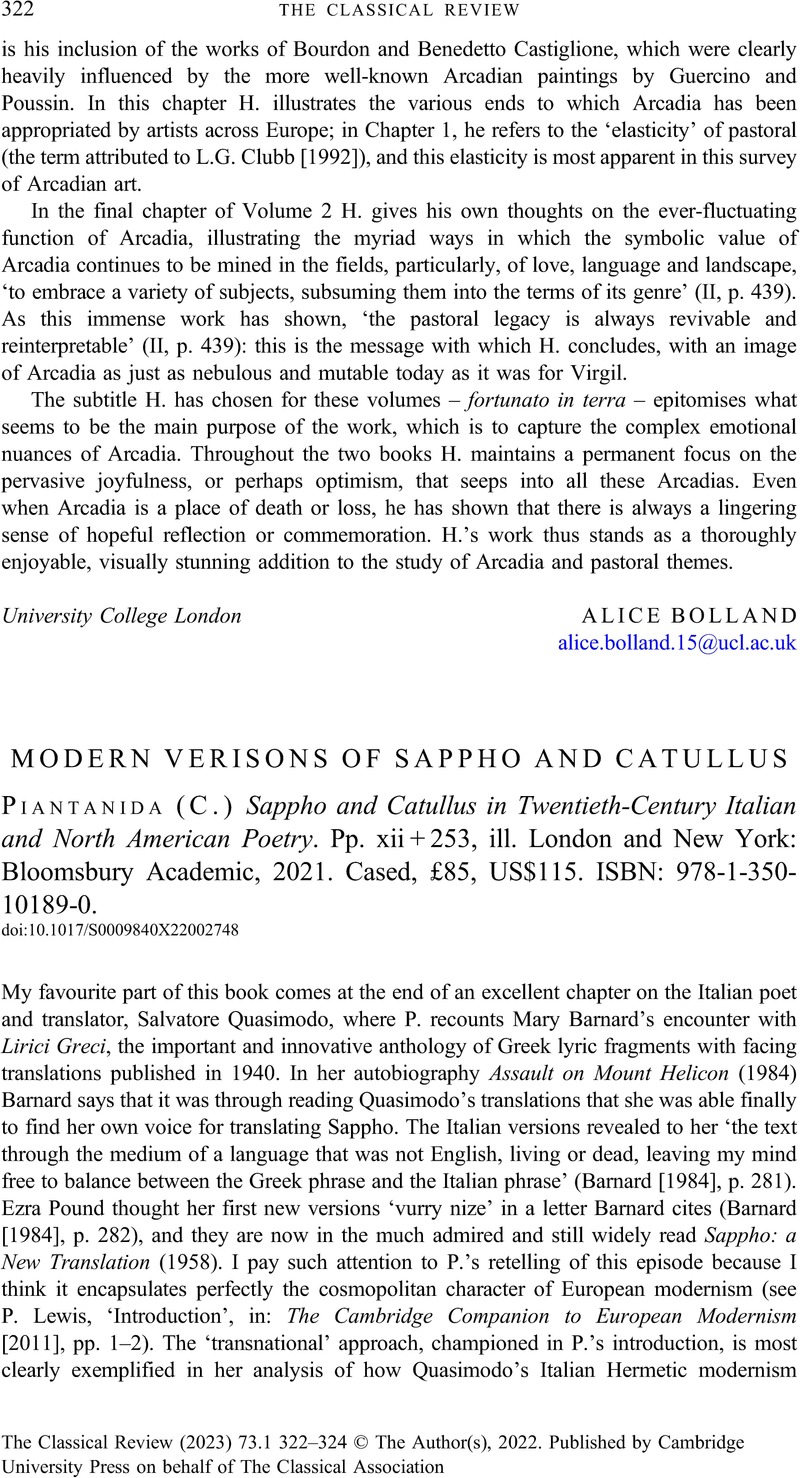No CrossRef data available.
Article contents
MODERN VERISONS OF SAPPHO AND CATULLUS - (C.) Piantanida Sappho and Catullus in Twentieth-Century Italian and North American Poetry. Pp. xii + 253, ill. London and New York: Bloomsbury Academic, 2021. Cased, £85, US$115. ISBN: 978-1-350-10189-0.
Review products
Published online by Cambridge University Press: 29 December 2022
Abstract

- Type
- Reviews
- Information
- Copyright
- Copyright © The Author(s), 2022. Published by Cambridge University Press on behalf of The Classical Association



